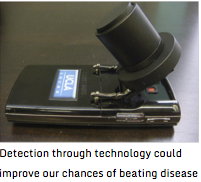By Karen Born (@bornk @ChooseWiselyCA)
By Karen Born (@bornk @ChooseWiselyCA)
As much as 30% of medical care is unnecessary, with some tests and treatments potentially exposing patients to needless harm. There are many underlying reasons for this, including clinicians failing to practice according to the latest evidence, as well as patients being misinformed or having the mindset that ‘more is better.’
Choosing Wisely Canada’s mandate is ‘to engage physicians and patients in conversations about unnecessary care.’ The campaign, which launched in April 2014, has engaged most of the country’s physicians through the development of recommendations as part of top 5 lists of things physicians and patients should question. Many of the recommendations in these lists have patient education materials, brief pamphlets written in plain language to explain the recommendation. For example, the 2nd recommendation from Family Medicine suggests that patients with sinusitis should not receive antibiotics has an accompanying pamphlet. Such pamphlets have been distributed through doctors offices, however we know that many patients, in fact the majority of Canadians, will look to the web for health care information. How can we think about how best to reach the Canadian public with this information?
Part of our efforts thus far have centred on the doctors office. We’ve developed creative materials as part of an ‘old fashioned’ public awareness campaign that drive home the message that ‘More is Not always better in health care.’
We also think that sometimes this message can confuse the public who is bombarded with information that they aren’t getting enough, and of the very often present gaps in health care, services and resources for many populations who need it.
An important part of our public education efforts are ‘the four questions’ which empower patients to initiate the conversation with their physicians about unnecessary care.
These questions are:
- Do I really need this test, treatment or procedure?
- What are the downsides?
- Are there simpler, safer options?
- What happens if I do nothing?
This is arguably the most powerful poster as it provides an action for patients – it gives them a way that they can start the conversation with their doctor about anything related to their medical care, and to question whether care is really necessary in an accessible, easy to understand way.
My #choosingwisely posters are up. Thanks @ChooseWiselyCA #FMF2015 pic.twitter.com/0ua6qmNC56
— Sunny Chan (@DrWaiSun) November 16, 2015
We want to reach out to the #hcsmca community to think about how to get these four questions out into the ether. This campaign is as much about influencing culture and expectations of health care as it is about the conversation with physicians. Join us December 2 at 1pm ET (time zone converter) to talk about:
- T1: How can a counterintuitive message like ‘more is not always better’ spread to the Canadian public via social media? Are there other examples that we can look to?
- T2: the four questions – how can we spread these? What is the role of social media?
Filed under: Guest moderator post, hcsmca, Participatory Medicine Tagged: Choosing Wisely Canada, Karen Born, medical tests
![]()







